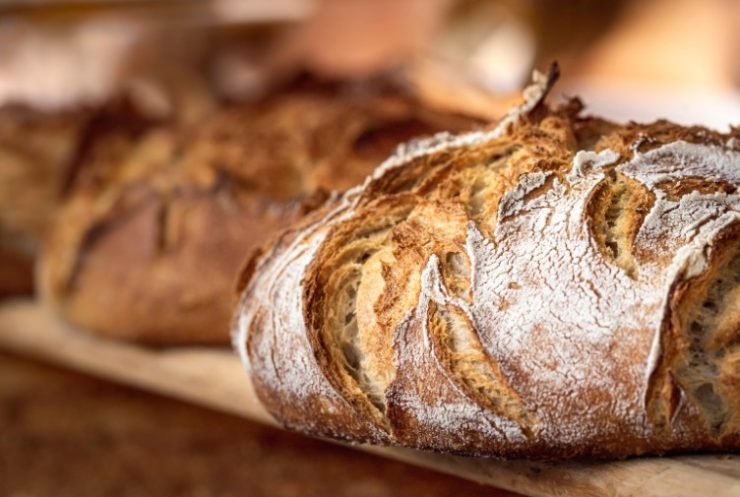I have to admit, I’ve eaten sourdough I shouldn’t have. Usually, out of sheer stubbornness, not wanting to waste a single slice of what I worked so hard to create. But, while it can be a tough pill to swallow, it’s good to know when to cut your losses.
In this article, I’ll explain how to use all of your senses to tell if your sourdough bread is bad. We’ll be looking at dry, stale, and moldy bread to find out when it’s time to repurpose, refresh, or simply throw it in the garbage.
So, let’s cross our fingers and hope that your loaf can be salvaged.
In This Article
Signs That Your Sourdough Bread Has Gone Bad
There are several different tell-tale signs that your sourdough has gone bad. And when I say “gone bad”, it doesn’t necessarily mean it has to be thrown in the trash.
There are different levels of “bad”, and we’ll get into that shortly. But first, we can use all of our senses to see, taste, smell, or feel if your sourdough is, let’s just say “past its prime”.
Look
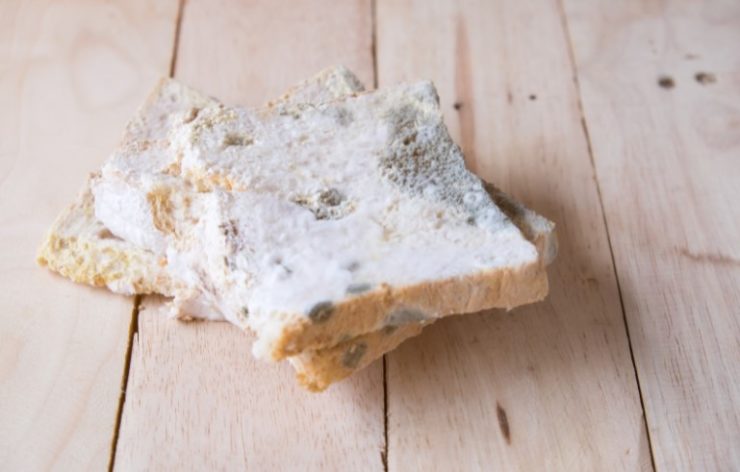
The first and maybe the easiest way to tell if your sourdough is bad is to look for visible mold. Most commonly, the mold on sourdough will be either white or greenish-blue.
It will be easiest and most common to find mold on the cut surfaces of your bread. The blue and green colors are a dead giveaway, but white mold can also look very similar to flour.
If you’re unsure, just give the white spot in question a gentle poke or scrape. If it’s flour, it will be hard, dry, and powdery. If it’s mold, it’s likely to be soft, moist, and maybe a little fuzzy.
Smell
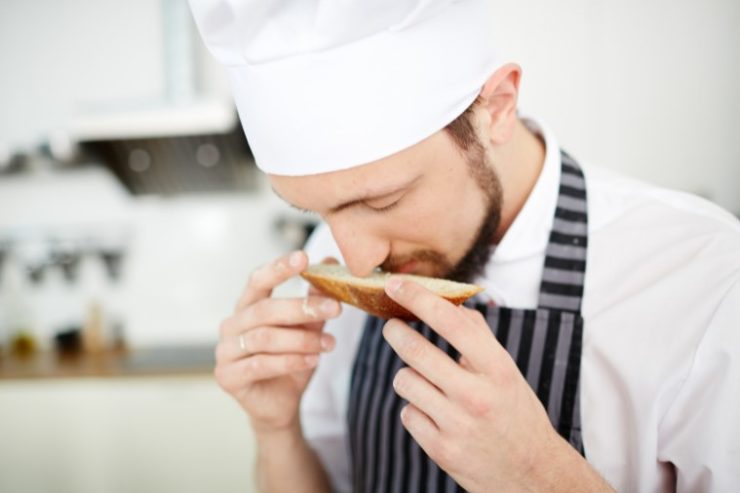
Mold is our number one concern when it comes to “bad” bread. but, even if you don’t see any you might not be in the clear yet. Mold can grow unseen within the spongy structure of your bread.
So, the next step is to give the bread in question a good sniff. Good sourdough will often have a sour aroma, but it will also be somewhat sweet and generally very pleasant.
Any time I bake a loaf of sourdough, I can’t help but smell and inhale the aromas as soon as it comes out of the oven. And I would recommend you do the same. Not only is it a magnificent scent, but it will give you an idea of what the bread should smell like, so you’ll know when something isn’t quite right.
Feel

While feeling your bread might not do much for mold detection, it will tell you if your bread is too dry to enjoy.
This one is pretty straightforward. Pick up your bread and give it a gentle squeeze. Even if you have a nice thick crust, the bread should have plenty of give. If it feels hard and dry, it’s probably time to start thinking of some secondary uses like french toast, or bread crumbs.
Taste
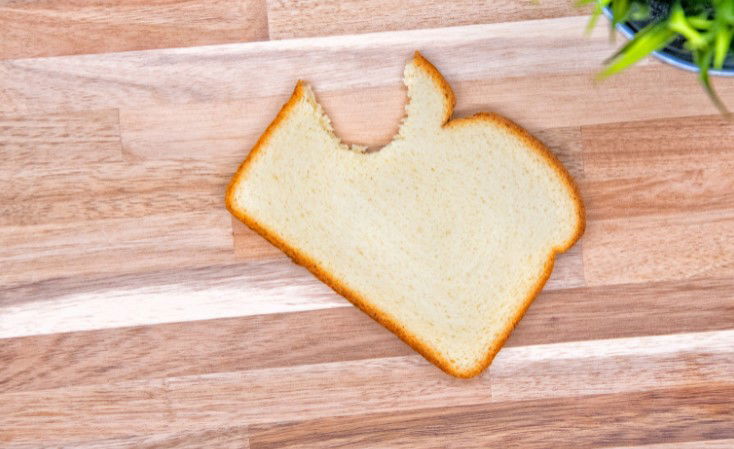
Finally, go ahead and give the bread a taste. You should be able to quickly tell if the bread is past its prime.
If it has an off taste, there may be some mold beginning to grow inside that made it past your sniff test. That means it got to go.
But if it’s just too dry or tough, it’s time to start thinking about some alternative uses, or go ahead and slather it in an excessive amount of butter and jam.
Dry vs Stale Bread: What’s The Difference?
Dry and stale are both terms used for bread that’s gone bad, or past its prime, but they are actually two very different things.
When bread becomes dried out, it simply means that it has lost moisture. Leaving it hard and crumbly. Usually, it happens by being exposed to air for an extended period of time.
But, when bread becomes stale, it actually goes through a process called starch retrogradation. This is when cooked starch molecules rearrange their structure, trapping moisture and becoming very brittle.
This is something that can happen when bread is stored for too long, or when exposed to cold temperatures. That means avoid storing it in the refrigerator.
So, dry bread loses moisture and becomes crumbly, while stale bread retains moisture and becomes tough and brittle. In practical terms, that means dry bread will absorb more liquid. And that makes it a better choice for things like bread crumbs for meatballs or bread cubes for stuffing.
You can use stale bread for the same applications, but you’ll get better results if you first remove that trapped moisture by drying it out in the oven.
Reviving Stale Sourdough
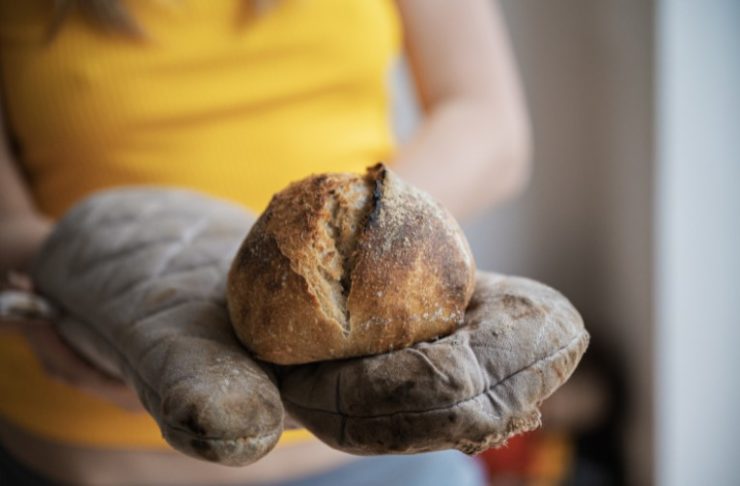
If your sourdough has gotten a bit stale, it doesn’t mean it has to end up as croutons or french toast, not that there’s anything wrong with such a fate.
Stale sourdough can be revived and brought back to its original glory (almost). All it needs is a splash of water and about 10 minutes in a hot oven to reverse the effects of that pesky starch retrogradation.
When To Cut Your Losses
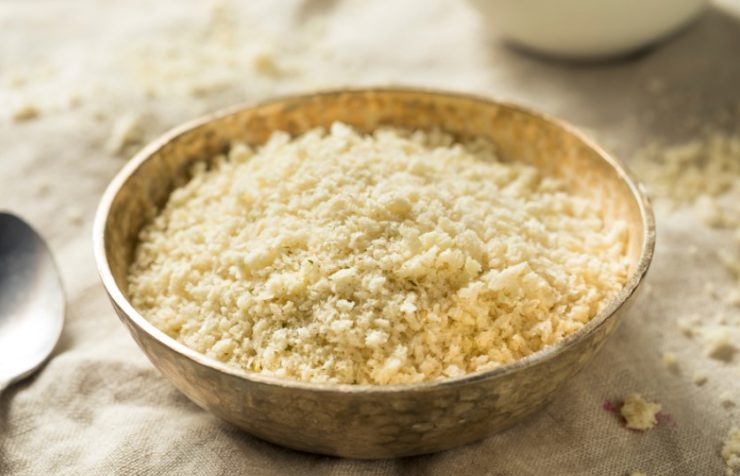
Even though you can call dry, stale, or moldy sourdough “bad”, it’s really only the moldy stuff that needs to end up in the bin. Whether you can see it, smell it, or taste it, there’s no use for moldy sourdough in the kitchen.
Dry or stale bread on the other hand can be revived or used for things like bread crumbs, bread pudding, or french toast just to name a few options.
But, you can be sure to get the most out of your bake by checking out our guide to storing sourdough bread and keeping it fresh longer.
Frequently Asked Questions
Does Sourdough Get Moldy?
The higher acidity level of sourdough provides some natural mold resistance, but sourdough will still get moldy. Especially in very humid climates.
How Long Does It Take Sourdough Bread To Go Bad?
When stored properly, sourdough bread will usually last between 5-7 days. Bread that has become dry or stale can still be used, while moldy bread should be thrown away.
What Is The Best Way To Tell Mold And Flour Apart?
The best way to tell mold and flour apart is to feel it. The flour will be dry and powdery, while mold will usually be moist and sometimes fuzzy.
